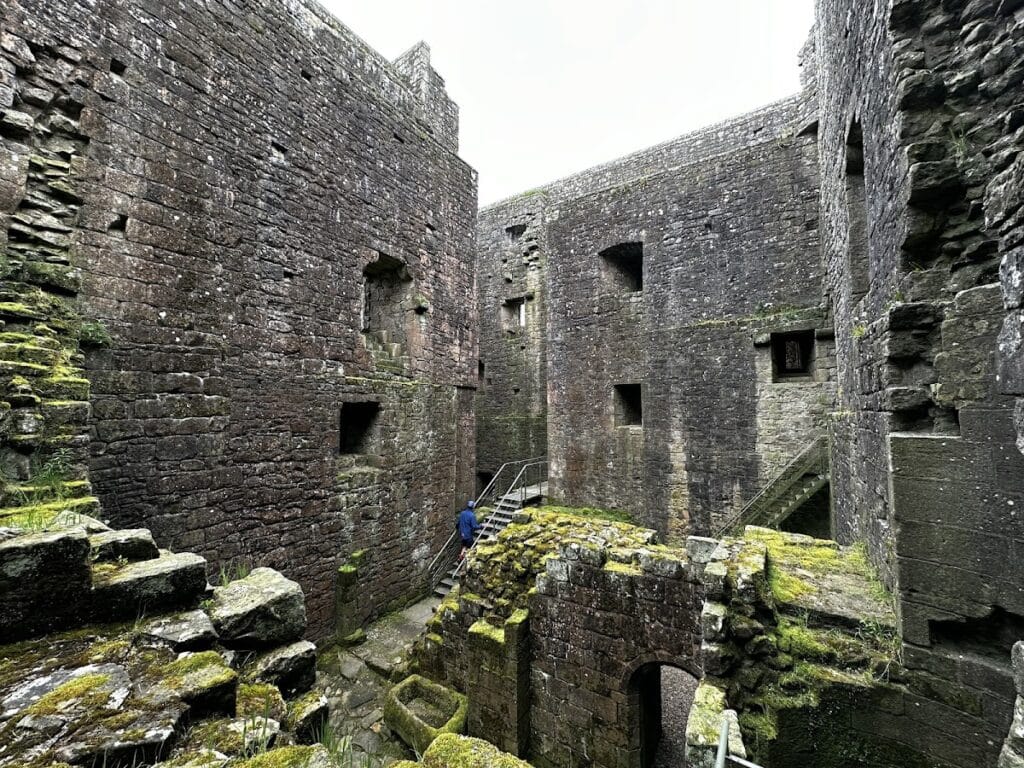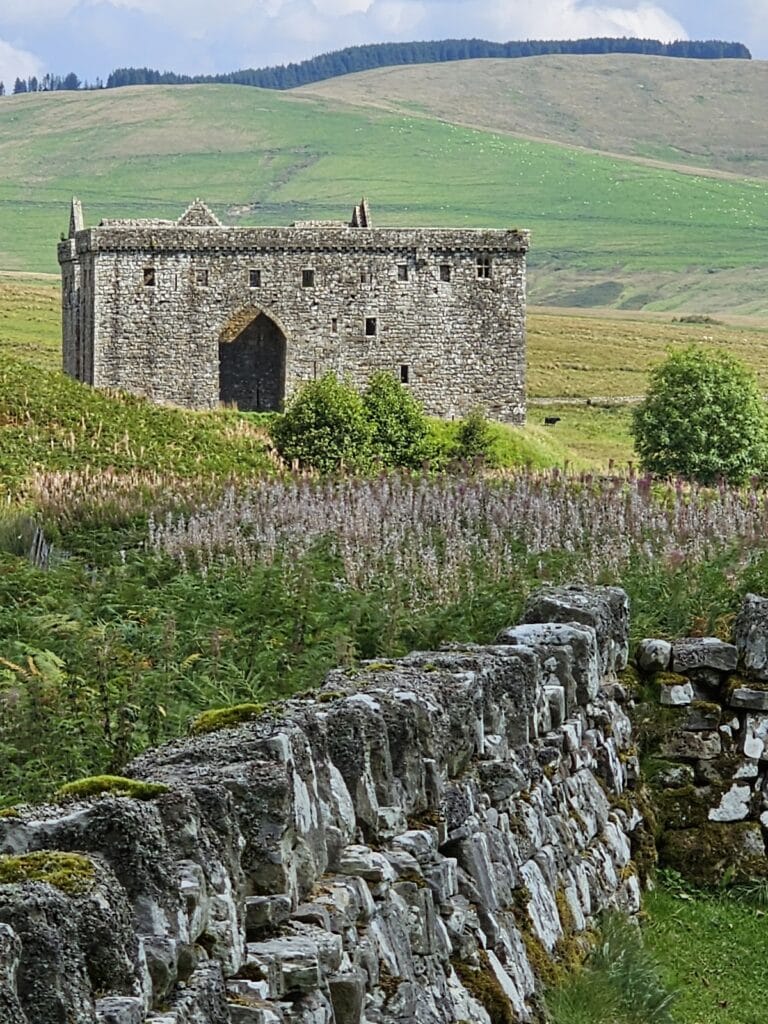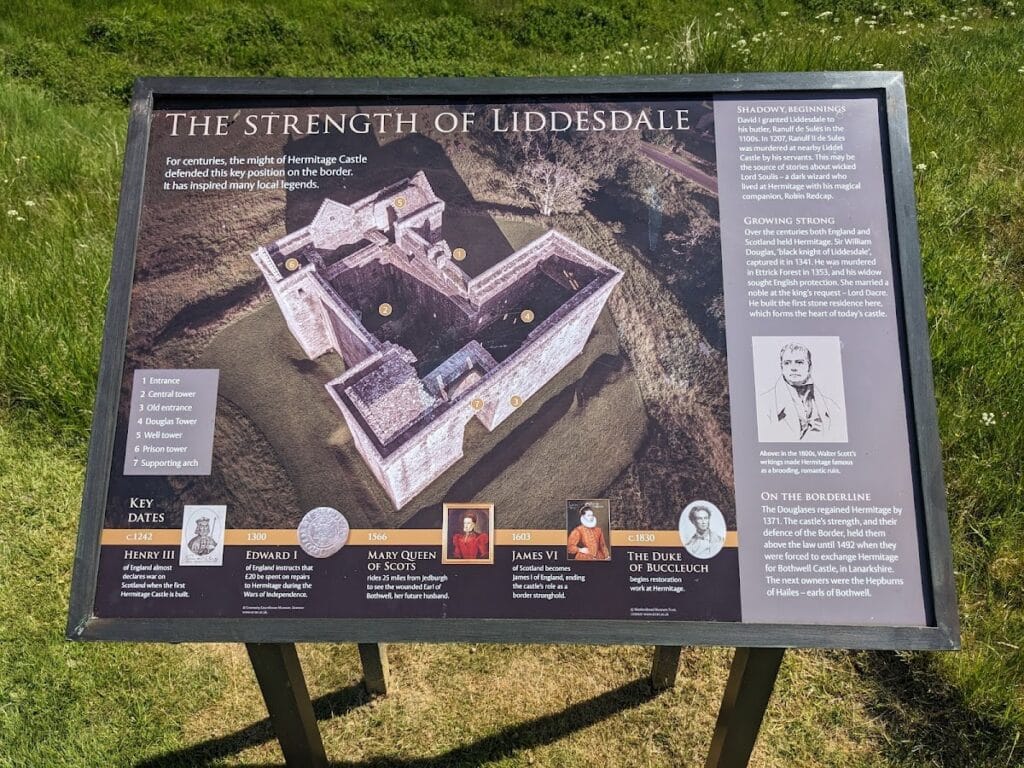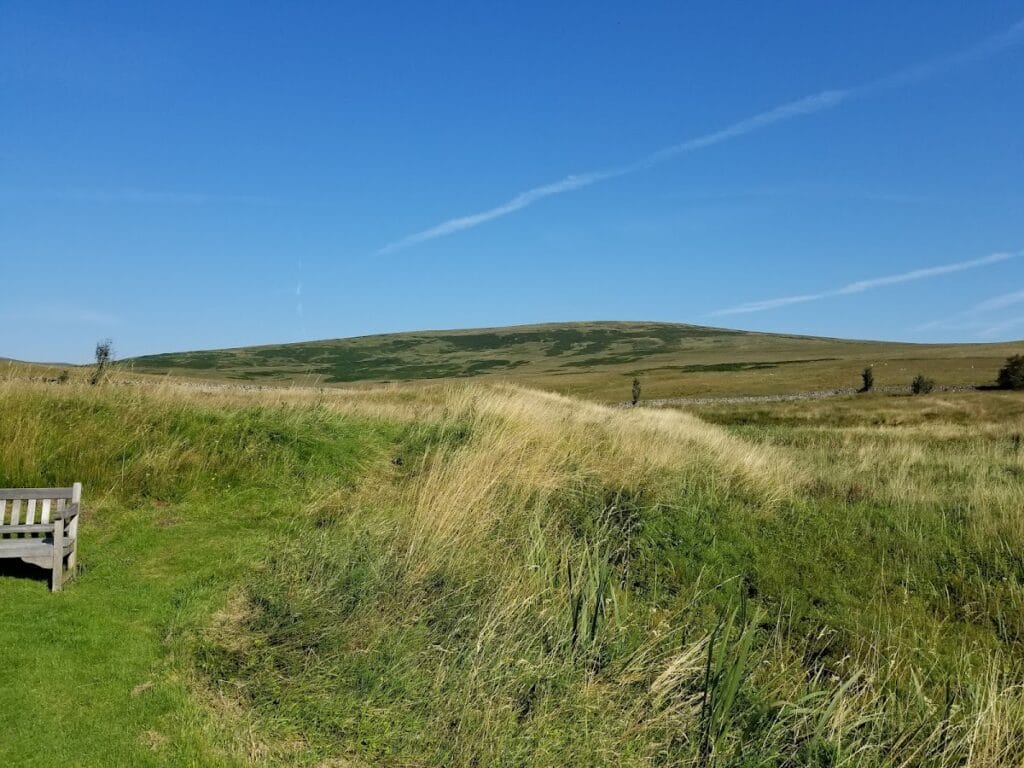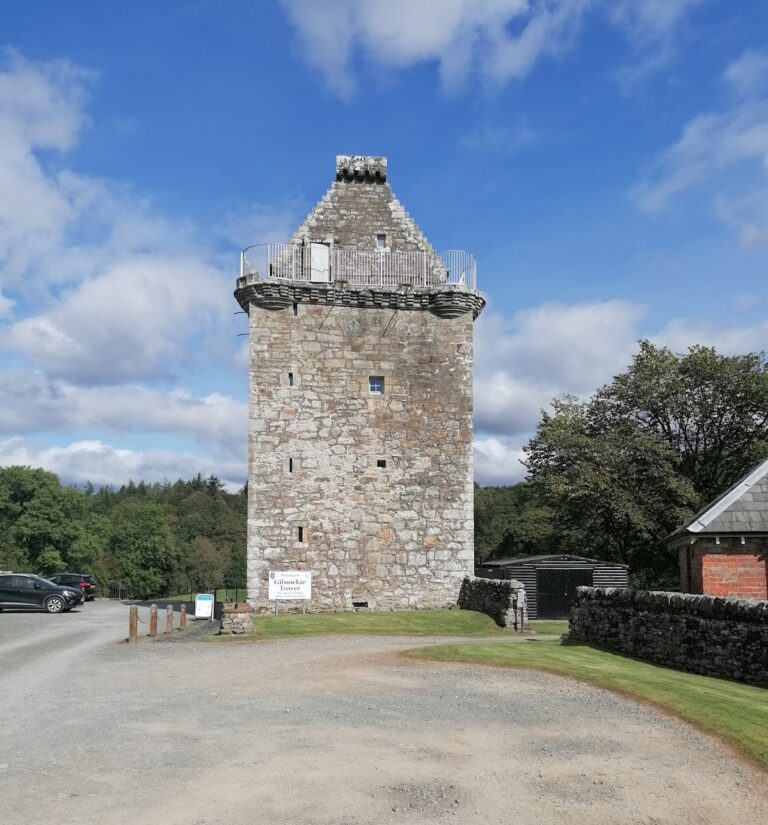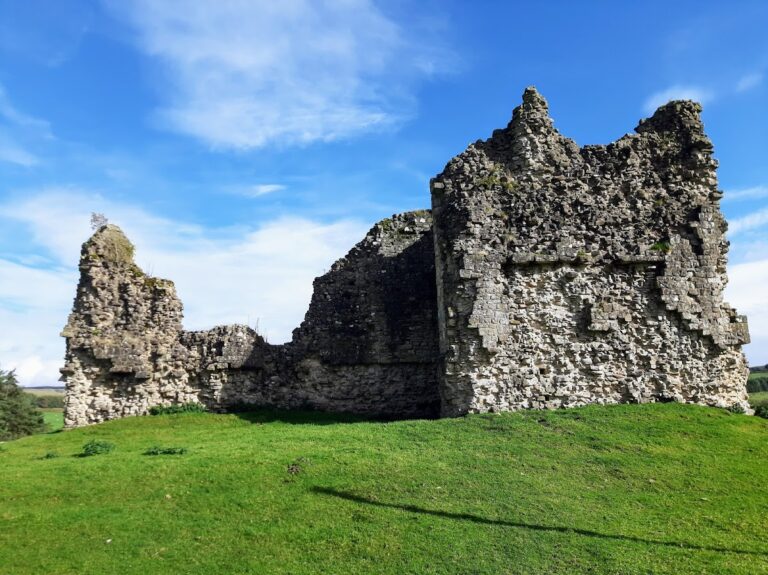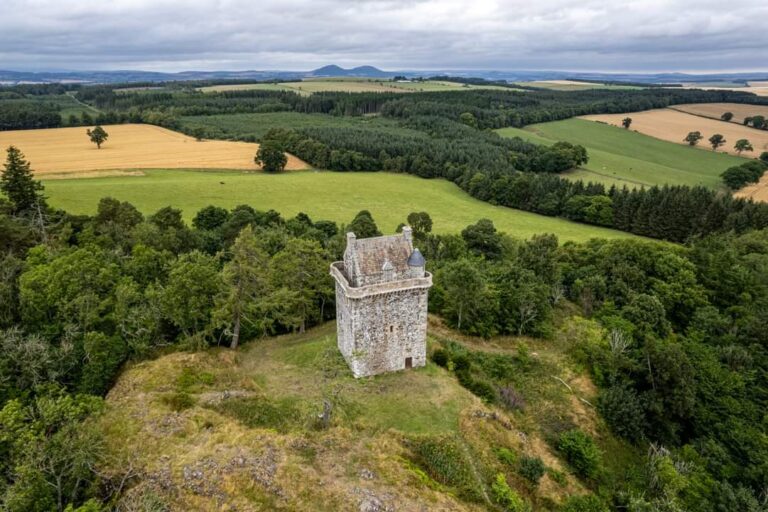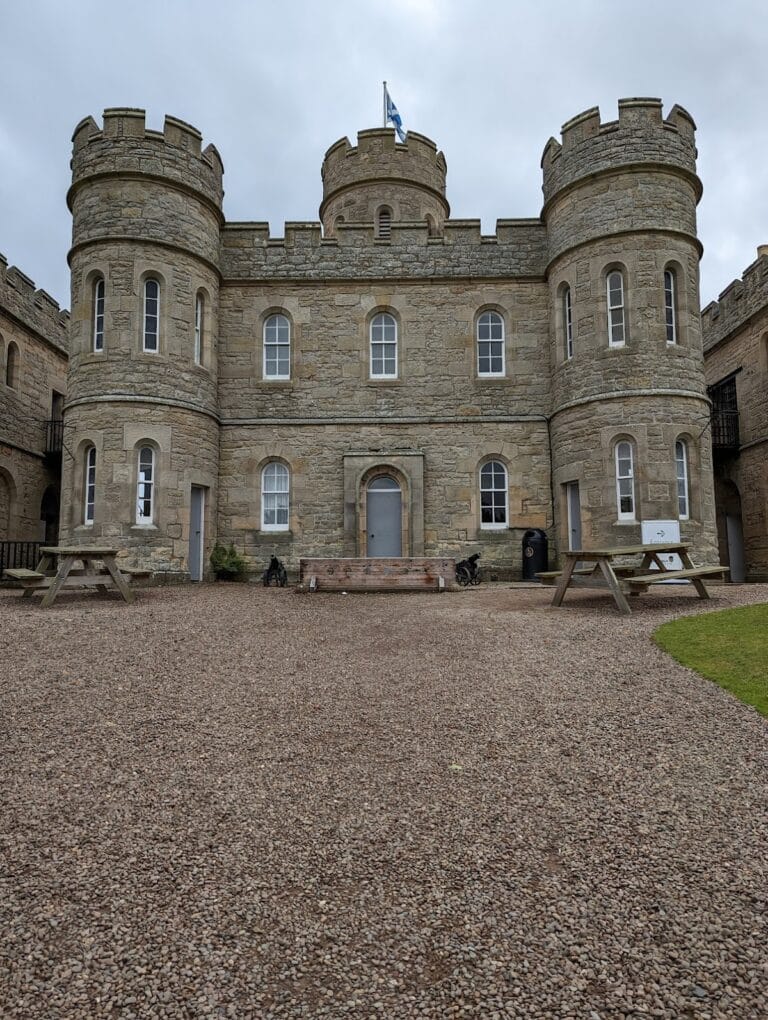Hermitage Castle: A Medieval Fortress in Scotland’s Borderlands
Visitor Information
Google Rating: 4.5
Popularity: Low
Google Maps: View on Google Maps
Official Website: www.historicenvironment.scot
Country: United Kingdom
Civilization: Medieval European
Remains: Military
History
Hermitage Castle is situated near Newcastleton in Scotland and was established by Norman settlers in the mid-13th century. Its origins trace back to around 1240 when Nicholas de Soulis constructed the fortress employing a motte-and-bailey design typical of Norman military architecture.
The de Soulis family controlled the castle until the early 14th century, when William de Soulis lost the property after being accused of witchcraft and a plot against King Robert I of Scotland. While legend holds that William was executed by boiling at a nearby stone circle known as Ninestane Rig, historical records confirm he died imprisoned in Dumbarton Castle. This area earned a grim reputation as the “Strength of Liddesdale” and was considered one of the most violent parts of Britain.
In 1338, Sir William Douglas, nicknamed the “Flower of Chivalry,” captured Hermitage Castle in a military action marked by the imprisonment and death of Sir Alexander Ramsay of Dalhousie. The Black Douglas family maintained possession until 1455, when their fall from favor transferred the castle to the Red Douglas line. Later, King James IV ordered Archibald Douglas, Earl of Angus, to relinquish the property, and in 1492 Patrick Hepburn, 1st Earl of Bothwell, was granted control of the lordship of Liddesdale, including Hermitage.
During the mid-16th century, James Hepburn, 4th Earl of Bothwell, held the castle. Mary, Queen of Scots, made a notable visit to the castle to see the Earl shortly after the birth of her son. Bothwell’s involvement in political conspiracies led to his escape and eventual death in captivity abroad. In 1584 Thomas Kerr of Ferniehirst was appointed as the keeper of the castle. Subsequently, Francis Stewart, 1st Earl of Bothwell and nephew of James Hepburn, held the position until accusations of witchcraft resulted in his arrest and the forfeiture of the castle to the Crown in the early 1590s.
King James VI granted Hermitage Castle to Sir Walter Scott of Buccleuch in 1594. Scott was a notorious Border reiver and served as Warden of the Western Marches, responsible for enforcing law along the Scottish-English border. By the early 17th century, following the Union of the Crowns in 1603, the castle lost its military importance and gradually fell into a state of ruin. Some restoration efforts were undertaken in 1820 by the Duke of Buccleuch, but in 1930 the property was transferred to public stewardship.
Throughout its history, Hermitage Castle has been tied intimately to the turbulent border wars between Scotland and England, as well as to several influential noble families. Its dark past inspired local stories, including legends of haunting spirits linked to former owners and royal visitors.
Remains
Hermitage Castle presents a striking example of a medieval fortress, originally constructed with a Norman motte-and-bailey layout. Most of the surviving stonework dates from rebuilding efforts carried out under the Black Douglas family in the 14th and 15th centuries. It stands in a remote valley near Hermitage Water, surrounded by ancient megalithic sites like the Ninestane Rig stone circle, tying the location to prehistoric ritual landscapes.
The main structure is a robust stone fortress exhibiting a forbidding and atmospheric character that has contributed to its reputation as one of Scotland’s most intimidating castles. It contains ancillary buildings, though details about their specific function and arrangement are limited in historical records. The craftsmanship behind the castle’s stonework is believed to have involved John Lewin, the master mason associated with Durham Cathedral, indicating skilled architectural input in its construction phases.
The fortress retains enough of its original form to showcase typical defensive features from the medieval period, though it now exists predominantly as a semi-ruined building. The complex is protected as a scheduled monument, with preservation efforts maintaining structural parts and protecting the site from further decay.
Oral tradition associates the castle with supernatural entities, including stories of a spirit named Redcap Sly, presumably connected to the de Soulis family, as well as tales linking the castle’s ambiance to the presence of Mary, Queen of Scots. These legends add a layer of cultural significance to the site alongside its historical and archaeological value.
Today, Hermitage Castle stands as a testament to the turbulent history of Scotland’s borderlands, both through its physical remains and the enduring stories passed down about its once fearsome occupants.

